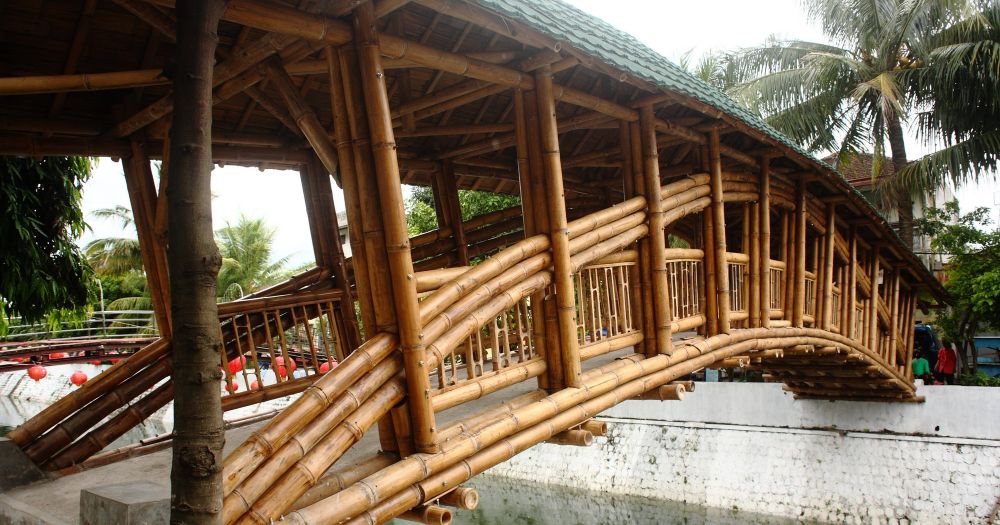

Kampong Cham, a picturesque city nestled along the banks of the mighty Mekong River, is home to one of Cambodia's most unique and transient landmarks — the Bamboo Bridge. Connecting the city of Kampong Cham to Koh Paen island, this ingeniously constructed bridge has a rich history that is deeply intertwined with the lives of the local communities.
The Bamboo Bridge has been a seasonal installation that locals have rebuilt annually following the monsoon season when the previous structure is washed away by the swollen Mekong River. For decades, this tradition has been an embodiment of the resilience and resourcefulness of the Khmer people.
Constructed entirely from bamboo, the bridge not only connects Kampong Cham with the rural island of Koh Paen but also serves as a vital transit route for villagers, monks, and tourists. Its existence highlights the intimate relationship between the inhabitants and the natural rhythms of the river.
Originally, the Bamboo Bridge was built out of necessity, with little concern for tourism. However, as Cambodia's tourism industry expanded following the country’s recovery from its troubled past, the bridge gained prominence as a tourist attraction. Travelers were fascinated by this marvel of indigenous engineering, which stands as a stark contrast to the country's ancient stone temples and colonial architecture.
Over the years, it became a must-visit destination for those seeking an off-the-beaten-path experience, not only to witness its construction but also to explore the serene rural lifestyle of Koh Paen island beyond it.
In recent years, the Bamboo Bridge has faced competition with the completion of a more permanent concrete bridge nearby. Despite this development, many tourists still opt to visit the Bamboo Bridge in order to capture the essence of a disappearing tradition and support the local economy. Consequently, the Bamboo Bridge has taken on a new role as a cultural touchstone, symbolizing the balance between modernity and tradition.
Each year, the reconstruction of the Bamboo Bridge continues to draw crowds, who are eager to participate in or observe the communal activity. It is often highlighted as an example of sustainable, community-driven tourism, where visitors can immerly learn about the resourcefulness and tenacity of the Khmer people.
While the bridge is strong enough to support motorcycles and even cars, visitors are reminded to traverse it with caution and respect for its structural integrity and the safety of others. It is also advised to engage with local guides or tours to gain deeper insights into the history and cultural significance of the Bamboo Bridge.
Whether you are a history enthusiast, a cultural explorer, or simply looking for an authentic Cambodian experience, the Bamboo Bridge in Kampong Cham offers a unique perspective on the resilience and ingenuity of the human spirit in harmony with nature.
As Cambodia continues to navigate its way through the crossroads of development and preservation, the future of the Bamboo Bridge hangs in balance. Efforts by the local community and interest from the tourism sector might play a crucial role in maintaining this living tradition. For now, the Bamboo Bridge stands as a proud reminder of Cambodia's rich cultural heritage and remains a poignant attraction for tourists from around the world.